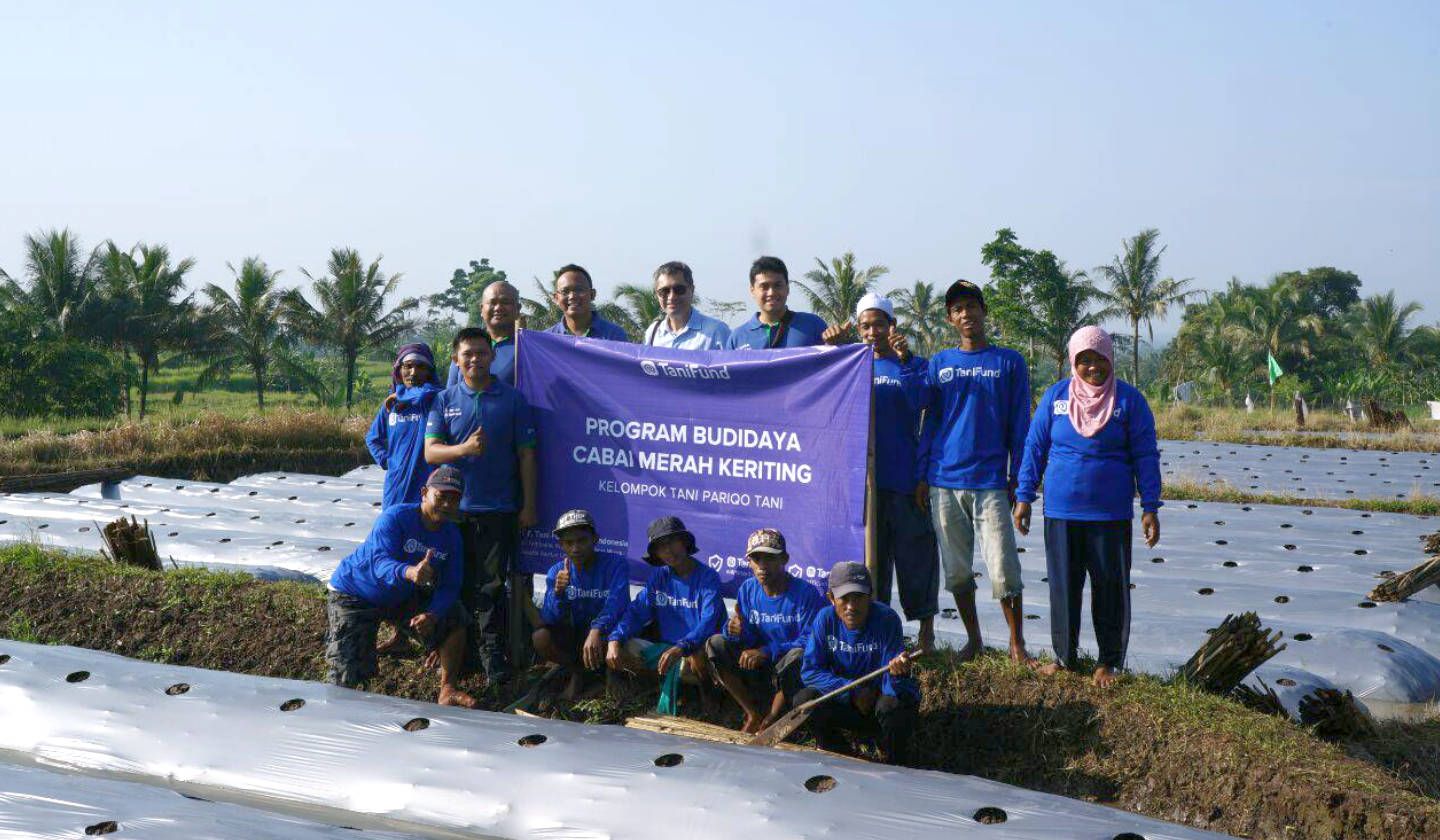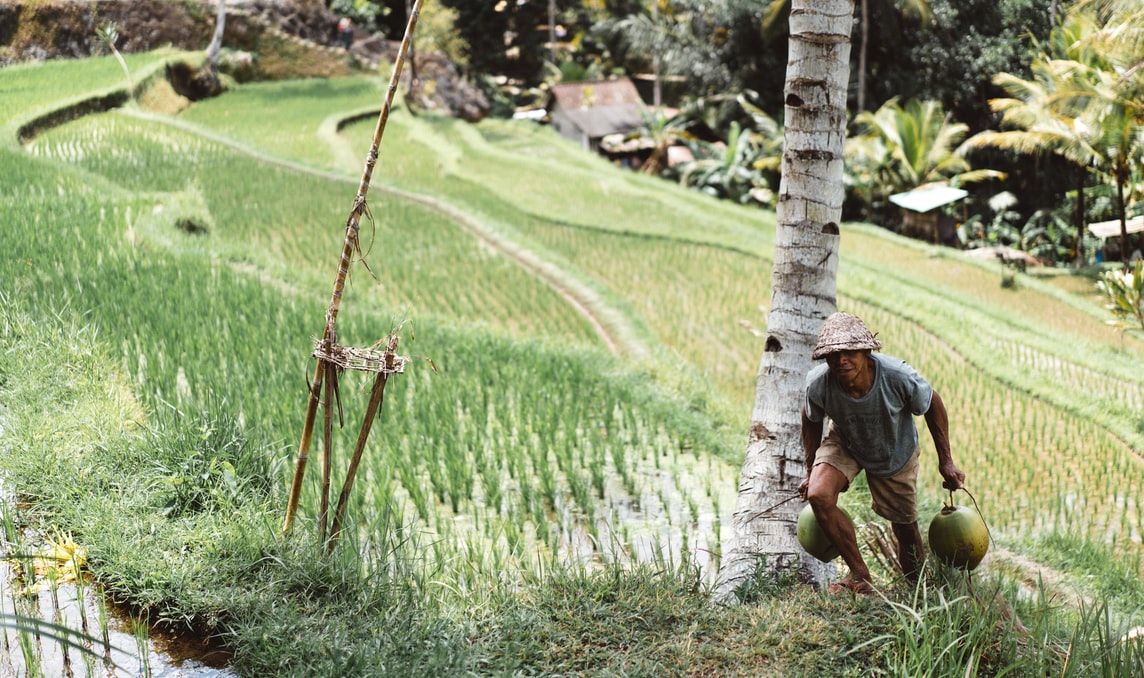Agricultural Credit: Liked Yet Respected
There are only five dedicated fintech lending players in the agri industry, judging by the records at OJK
Agricultural credit in Indonesia has a sexy margin to work on but is risky when implemented. This has become an old story for banks entering this sector. There are so many issues that prevent financial institutions from getting too involved in this sector.
Factors of crop failure due to pests, bad weather, and other risks caused by humans are their daily food. Although this risk should be overcome if using insurance, the factor of crop failure has the same impact as a decrease in the supply of basic commodities/commodities: soaring selling prices.
Results National Socio-Economic Survey (Susenas) 2016 involving eight thousand farmers as respondents revealed that 15% of farmers have access to bank credit and 33% have received assistance from the National Program for Independent Community Empowerment (PNPM) and People's Business Credit (KUR). The majority of farmers, around 52%, still rely on their own capital, cooperatives, relatives, and other non-bank financial institutions.
There are four factors that cause problems with agricultural credit programs if they go through banks, namely giving credit that is not on target, interest subsidies, bureaucratic procedures, and high risk. moral hazard. The root of all these problems is high potential for default.
Banking responds by setting high interest rates because of different levels of supervision, for example placing field people to monitor and so on. The government finally “interrupted” by changing KUR distribution scheme starting early this year. So it's simpler because the main target is micro business actors who already have a business but don't yet bankable.
The main requirements for applying for KUR are that the prospective debtor has a productive business that has been active for at least six months, is not currently receiving credit except consumer credit, and is not on the BI blacklist. Next, the prospective debtor must provide personal identification, in the form of KTP, Family Card, NPWP, marriage/divorce certificate, micro or small business certificate that has been issued by the authorities, and a statement of payment and printout of the account from the previous loan.
Number of players in sector agritech it's still limited. According to OJK records as of March 2020, they are iGrow, iTernak, Crowde, TaniFund, and DanaLaut.

Take advantage of the void
Fintech players enter this segment by gathering all their "courage" and accompanied by risk mitigation that has been carefully measured. The form of funding they offer is generally in the form of p2p lending, meaning that there is a lender (either individual or corporation) as Actioncalendar to be distributed as business capital financing to verified farmers.
TaniFund, for example, is an entity part of the TaniHub Group that specifically distributes loans to farmers for their agricultural projects. TaniHub (e-commerce), TaniSupply (supply chain leaders), and TaniFund completes the solution suite end-to-end group for local farmers.
This differentiation was deliberately created by TaniHub Groub. TaniHub forms a comprehensive ecosystem for farmers from before planting to harvest. The company will absorb all the harvest, in any quality, at a price that has been agreed upon from the start.
The harvest is completely sold to TaniHub consumers, whether they are b2b or b2c partners (via the e-commerce platform). As a result, farmers do not need to worry about the risk of having to deal with middlemen.
"Usually after borrowing from middlemen, farmers are confused about whether to sell their crops. In the end, they sell it to middlemen who charge the price until it drops, and in the end they make a loss. But we are 100% done off taker, from point 0 until the selling process has entered the TaniHub ecosystem. "Farmers only need to think about how to improve the quality and quality of their agriculture," explained the Director TaniFund Edison Tobing.
By forming such an ecosystem, TaniFund succeeded in reducing the rate of bad loans to the level of 0,2% and TKB90 100%. According to him, the NPL was not due to failure to pay, but rather a delay in payment because the company had mitigated risks in every way, including using insurance services.
Gradually the need for funding at TaniFund is getting higher as the number of farmers who join continues to increase. However, this has not been accompanied by many Actioncalendar joining institutions. Only two came from banks. The majority of funders at TaniFund are individuals.
Edison said that, on average, banks were still conventional. They always ask if it's a loan like this, what kind of collateral is it. With a p2p lending license, the company cannot provide any guarantees because it only acts as a platform that brings together borrowers and lenders.
“Why did the farmers end up cooperating with us because they failed to cooperate with the bank. Because the bank gives funding and expect funding come back."

He continued, "In the end, what we do can only strengthen their confidence, inviting them to meet directly with the farmers we train. To ensure that the funds are returned to Actioncalendar"We will pay directly to the bank, not the farmers because we ourselves take the goods from the farmers."
Regarding the possibility of TaniFund being connected to KUR, Edison stated that there were several factors that were less likely. First, the KUR program that is currently running is mostly directed at commodities that were not yet featured in TaniHub when they entered its e-commerce platform.
This would be a problem if TaniFund forced it. For example, the government is encouraging many corn farmers to take KUR, while corn is currently not the product most sought after by TaniHub consumers.
"We still maintain risk because after giving funding, we have an obligation to absorb it. "Meanwhile, the products being sold are not what our consumers are most looking for."
Second, from a legal perspective, p2p lending has a maximum loan requirement per project of IDR 2 billion. Meanwhile, the KUR program distributes credit above this figure per project. This second problem is connected to the first problem, that TaniFund will have difficulty selling crops on its platform, while also violating regulatory provisions.
“We mostly go to lower middle class farmers whose land is under four hectares, depending on the type of commodity. [..] Our need for rice is probably only 2 thousand tons per month, while KUR's absorption is extraordinarily large. We have to prepare the structure first before we can do it commits [to the relevant ministry].”
To date, TaniFund has disbursed loans amounting to IDR 129 billion. This year alone, the company has distributed IDR 42,19 billion. It is targeted that by the end of the year this figure will reach IDR 90 billion.

The number of players is limited
Actually there are a number of other players who dedicate themselves as platforms for agriculture, animal husbandry, or aquaculture. The concept they use is not much different from TaniFund, namely providing consultancy assistance as a form of empowering farmers so that they understand how to grow food properly and manage finances appropriately.
Crowde, for example, offers capital loans to farmers with a harvest deposit scheme, called Peasant People's Movement (GARAP). The targeted commodities are rice, corn and chilies. The amount of the deposit varies, depending on the agricultural commodity.
After being given working capital, farmers will repay the loan with the harvest according to the commodities planted slowly. For example, for chili commodities cultivated on land with a minimum area of 2.500 square meters (m2), farmers must deposit 1,75 tons of harvest.
Meanwhile, for rice commodities, the harvest that must be deposited is 5,7 tons on a minimum land area of 10.000 m2. If a farmer's harvest exceeds the benchmark, this will become the farmer's right. This innovation can expand farmers' options in obtaining working capital.
Outside the fintech segment, there are many other agritech players who offer solutions to different problems. Some touch on elements of management platforms, IoT, and even blockchain.
One agritech segment with the most players is the e-commerce platform that sells agricultural products for daily needs. There are countless players who have become market leaders, even suddenly pivot because it was affected by the pandemic. They try their luck at the same cake.
The business cake in this industry is indeed big. Banking itself has not been able to solve its financing needs, so the opportunities for fintech platforms in this sector are still very large.
Platform way in mitigating risks in this industry are also diverse. Apart from using technology, there are those who try to channel financing through intermediaries, such as cooperatives which are considered to have more direct contact and understand the conditions of their members. This model was adopted Blossom.
Nonetheless, players still has limitations compared to banks, namely the availability of funds. Pattern channeling between banks and platforms its use can be continued for wider industry.
Sign up for our
newsletter
 Premium
Premium
